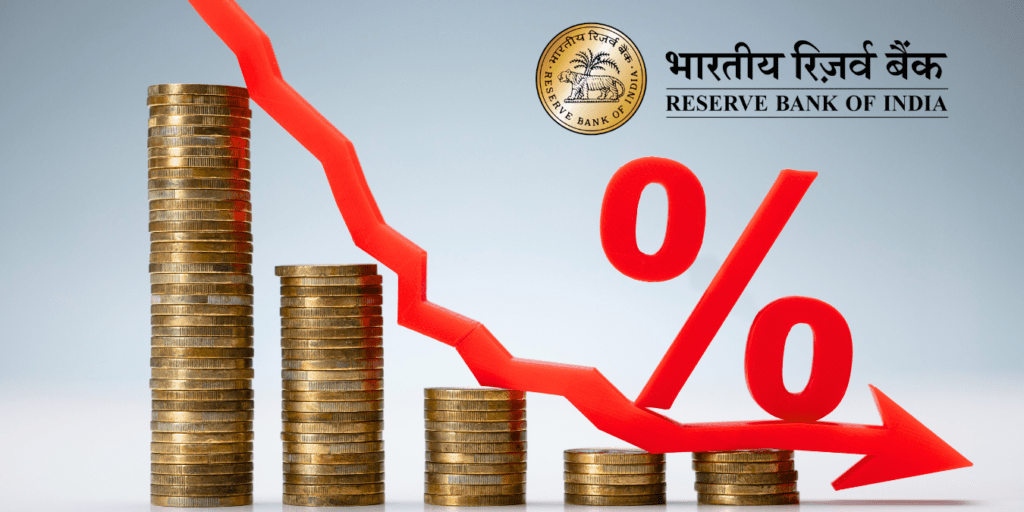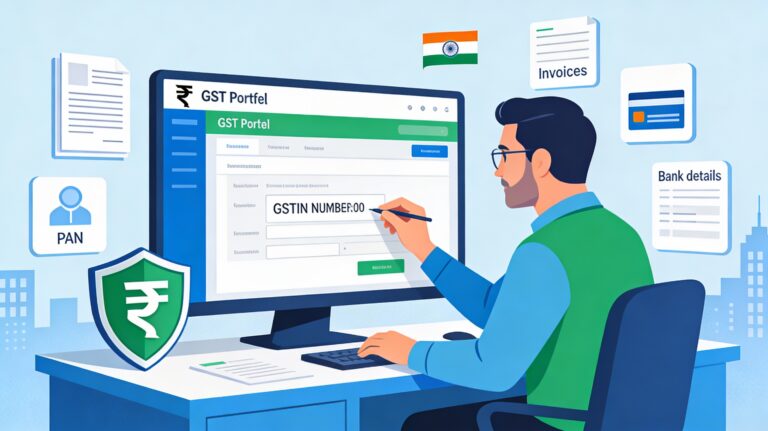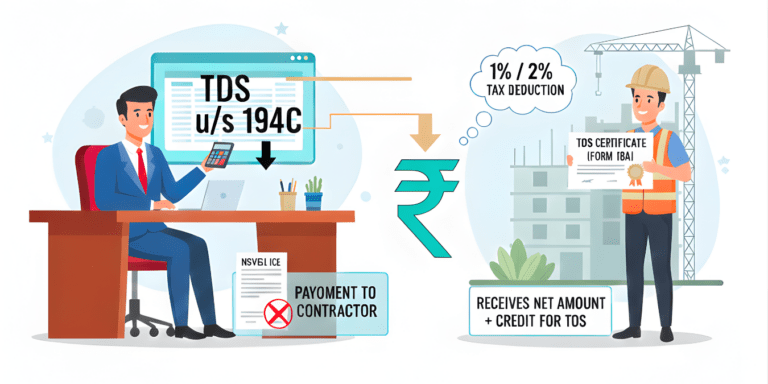
India’s GSTN advisory of August 2025 is a game-changer, unlocking GST refunds despite positive or zero balances if any minor head (CGST, SGST, penalty) is negative. With 9 lakh monthly claims and 22% faster settlements, MSMEs and exporters gain vital liquidity. Automated RFD-01 forms and tooltips simplify compliance, fueling India’s $5 trillion economy dream. Will this reform free your business’s cash flow?
India’s economic landscape is witnessing a seismic shift with the Goods and Services Tax Network (GSTN) advisory effective August 28, 2025. This transformative update allows taxpayers to claim GST refunds even when cumulative balances are positive or zero, provided any minor head—such as interest, penalty, or tax—shows a negative balance. This long-overdue reform dismantles a critical barrier, releasing trapped working capital and streamlining refund processes at a time when economic agility is paramount. For Indian businesses, from bustling startups in Bengaluru to traditional manufacturers in Ludhiana, this change is a lifeline, promising liquidity, growth, and a bolder step toward India’s $5 trillion economy vision. Let’s dive into how this GSTN portal enhancement reshapes India’s business ecosystem, with suspenseful twists, actionable insights, and a narrative that sparks curiosity.
A Long-Standing Roadblock Removed
For years, Indian businesses faced a frustrating bottleneck: GST refund claims were denied unless the cumulative balance of a Demand ID was negative and marked “Refund Due.” Even if a single minor head (like CGST, SGST, IGST, interest, or penalty) showed a negative balance, a positive or zero overall balance blocked legitimate refunds. This technical glitch trapped crores of rupees, stifling cash flows for manufacturers, exporters, and micro, small, and medium enterprises (MSMEs). The GSTN’s August 2025 advisory flips this script, enabling refunds based solely on negative minor head balances, regardless of the cumulative total. This is not just a policy tweak—it’s a financial emancipation for businesses long suffocated by bureaucratic red tape.
The Shift: How the GSTN Portal Now Works
Imagine a small exporter in Surat, waiting months for a refund, only to be denied because a minor penalty head showed a positive balance despite an overall surplus. Such stories were commonplace—until now. The revamped GSTN portal introduces a smarter, more intuitive system:
- Auto-Populated Refunds: Only negative balances in minor heads (e.g., CGST, SGST, interest, or penalty) are automatically populated in Form RFD-01, ensuring taxpayers claim only eligible amounts with precision.
- Guided Navigation: Tooltips and auto-suggested demand orders (like order-in-original, rectification, or appellate orders) make the process transparent, reducing errors and confusion.
- Forthcoming Support: GSTN promises a comprehensive user manual and FAQs to address every refund scenario, with a helpdesk ready to tackle system-related queries.
This automation delivers a suspenseful twist: businesses once resigned to lost refunds can now reclaim their capital, sparking hope and opportunity across India’s commercial hubs.
Why This Matters: Unlocking Liquidity for Businesses
Liquidity is the lifeblood of any business, and nowhere is this truer than in India’s dynamic MSME sector, which contributes 30% to GDP and employs over 11 crore people. The GSTN’s reform directly addresses working capital blockages, allowing businesses to reinvest funds into operations, innovation, and expansion. For exporters, who often face inverted duty structures, and manufacturers dealing with complex tax heads, this change means faster access to cash previously locked in the GST system. As India pushes toward economic self-reliance under Atmanirbhar Bharat, this reform is a catalyst, enabling businesses to fuel job creation, scale production, and compete globally.
Amazon Great Freedom Festival Sale 2025: Best Deals with SBI Credit Card Offers Save Up to ₹5,250!
Indian Stock Market Trends 2025: Sensex, Nifty 50 & Sector Surges – What’s Driving Dalal Street Today?
SBI Hits Record Fraud Losses in 2025: How Small-Ticket Banking Frauds Are Skyrocketing and Why SBI Is Most Vulnerable
The RBI 25 bps Rate Cut: Why Your Wallet and the Economy is About to Feel Different
The Broader Impact: A New Era for Indian Taxpayers
Streamlined Refund Workflows
The GSTN portal’s overhaul introduces a seamless refund process. As of August 2025, over 9 lakh monthly refund applications are processed with a 22% year-on-year increase in same-month settlements. Automation, including system-driven eligibility checks and auto-order suggestions, ensures only genuine claims are approved, reducing disputes and delays. For new entrepreneurs, this simplifies compliance, lowering entry barriers for startups and small businesses. The promise of faster digital settlements is a game-changer, especially for exporters and service providers navigating zero-rated supplies or SEZ transactions.
Capital Unlocked for Growth
By allowing refunds even with zero or positive cumulative balances, the GSTN advisory frees up dormant funds. This capital infusion supports investment in technology, workforce expansion, and market penetration—key pillars of India’s $5 trillion economy goal by 2027. For MSMEs, this means less reliance on high-interest loans, while large corporates benefit from optimized treasury management. The reform aligns with broader GST 2.0 initiatives, such as simplified tax slabs (5% and 18%) and automated returns, fostering economic surge and global competitiveness.
2025’s GST Refund Landscape: Key Data and Insights
- Volume and Speed: Over 9 lakh refund applications are processed monthly, with settlement times averaging under 15 working days, a significant improvement from 2024’s 20-day average.
- Sectoral Benefits: Exporters and businesses with inverted tax structures see the most gains, with refunds for zero-rated supplies and ITC accumulation now processed faster.
- System Enhancements: Automated eligibility checks and error-reducing validations ensure accuracy, with only negative minor head balances qualifying for refunds.
Reader Hooks: What This Means for You
This GSTN advisory isn’t just a policy update—it’s a call to action for Indian businesses. Consider these compelling questions:
- Could this reform unlock funds for your business’s delayed expansion plans?
- Will India’s streamlined refund process propel it into the global top ten for “Ease of Paying Taxes”?
- Can automation reduce GST disputes, sparing you stressful tax inspector visits?
- For startups, does this mean predictable cash inflows to fuel growth?
These hooks resonate with every entrepreneur, from a Chennai-based tech startup to a Kanpur-based leather exporter, making this reform a personal win for millions.
Stunning Suggestions for Businesses
To capitalize on this GSTN reform, businesses must act swiftly and strategically:
- Review Past Claims: Revisit refund applications previously rejected due to positive or zero cumulative balances. The new rules may now make them eligible.
- Train Finance Teams: Equip your team to navigate the updated GSTN portal, leveraging tooltips and auto-suggestions to maximize claims.
- Monitor Minor Heads: Regularly track balances in CGST, SGST, IGST, interest, and penalty heads to identify refund opportunities proactively.
- Stay Informed: Watch for GSTN’s upcoming user manual and FAQs to ensure compliance and optimize refund processes.
MSMEs vs. Large Corporates: A Tale of Two Impacts
The GSTN portal change affects MSMEs and large corporates differently, reshaping their working capital dynamics in unique ways.
Impact on MSMEs
- Immediate Cash Flow Relief: MSMEs, operating on razor-thin margins, often face severe cash crunches. Previously, blocked GST refunds due to cumulative balance restrictions stalled inventory purchases, payroll, and growth plans. The new rule unlocks these funds, providing a lifeline for daily operations.
- Reduced Financial Strain: Faster refunds reduce dependence on costly external credit, allowing MSMEs to sustain operations without drowning in debt. This is critical for India’s 6.3 crore MSMEs, which drive 45% of exports.
- Simplified Compliance: With limited in-house expertise, MSMEs benefit immensely from the portal’s automated form-filling, tooltips, and error-reducing features, making compliance less daunting.
- Growth Enablement: Unlocked capital fuels investment in digital tools, workforce expansion, and market outreach, aligning with India’s push for MSME-driven economic growth.
Impact on Large Corporates
- Liquidity Optimization: Large corporates, with robust cash reserves, gain incremental liquidity by recovering refunds tied to minor head imbalances. This enhances treasury efficiency and reduces capital costs.
- Efficiency Gains: Automation and clear refund rules streamline tax compliance, reducing disputes and improving financial forecasting for complex GST structures.
- Selective Benefits: The reform is most impactful for corporates with inverted duty structures or multi-head GST demands, though the proportional benefit is smaller compared to MSMEs.
- Scale of Impact: While refund amounts are larger in absolute terms, they represent a smaller fraction of corporate capital, making the reform an efficiency tool rather than a survival mechanism.
Key Differentiators
| Aspect | MSMEs | Large Corporates |
| Working Capital Pressure | High; refunds critical for survival | Moderate; improves liquidity management |
| Refund Accessibility | Historically constrained; delays crippled cash flow | Better managed but complex cases benefited |
| Impact of Unlocking | Immediate boost to cash flow for operations and growth | Incremental liquidity for treasury optimization |
| Compliance Complexity | High; simplified portal features are a game-changer | Lower; automation reduces error rates and costs |
| Refund Processing Speed | Faster refunds alleviate operational bottlenecks | Quicker processing aids forecasting and contingency planning |
| Scale of Refunds | Smaller but proportionally vital | Larger but less critical to overall capital |
| Financial Flexibility | Reduces reliance on loans, enabling stability | Enhances cash flow efficiency and strategic deployment |
| Administrative Burden | Significantly reduced by automation and guides | Streamlined workflows lower compliance costs |
| Sectoral Impact | Critical for MSME growth and survival | Supports corporate efficiency in complex GST scenarios |
Emotional Resonance: A Triumph for Indian Entrepreneurs
For India’s entrepreneurs, navigating the GST maze has been a test of resilience. From sleepless nights over cash flow woes to endless paperwork, their perseverance has fueled India’s economic engine. This GSTN advisory is more than a technical update—it’s a validation of their grit. Businesses that once wrote off GST refunds as “lost hope” now see a reversal, transforming bureaucratic hurdles into opportunities. Picture a small business owner in Coimbatore, tears of relief in their eyes as long-blocked funds flow back, enabling a new production line or a child’s education. This reform is a shared victory for India’s dreamers and doers.
The Bigger Picture: Economic Agility in 2025
The GSTN advisory aligns with India’s broader GST 2.0 reforms, announced on August 15, 2025, focusing on structural simplification, rate rationalization, and ease of doing business. By reducing tax slabs to 5% and 18%, automating returns, and expediting refunds, the government is paving the way for a more competitive India. The advisory’s impact extends beyond immediate liquidity—it fosters trust in governance, encourages formalization of the unorganized sector, and positions India as a global leader in tax efficiency. As the GST Appellate Tribunal begins operations in 2025, resolving disputes faster, businesses can expect fewer legal battles and more focus on growth.
Challenges and Cautions
While the reform is a leap forward, challenges remain. Businesses must ensure all due returns (GSTR-1, GSTR-3B, etc.) are filed before claiming refunds, as per CGST Act requirements. The transition to automation may initially confuse smaller enterprises unfamiliar with digital interfaces. GSTN’s promise of a user manual and FAQs is critical to bridge this gap. Additionally, taxpayers should monitor for system glitches and raise helpdesk tickets promptly to avoid delays.
Final Thought: A New Dawn for India’s Economic Momentum
The GSTN advisory of August 28, 2025, is a testament to responsive governance, placing trust and liquidity back in the hands of India’s innovators, exporters, and entrepreneurs. By dismantling refund barriers, it empowers businesses from Mumbai to Madurai to reclaim their rightful funds and drive India’s next financial leap. This is not just a policy win—it’s a spark for economic momentum, igniting growth, resilience, and ambition across the nation. Every business should seize this opportunity, review their GST balances, and script their own success story in India’s vibrant economic future.

































